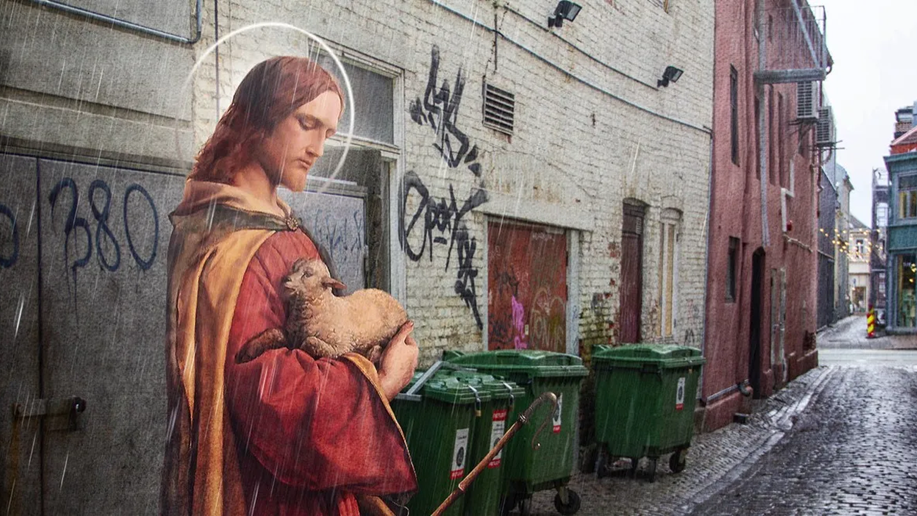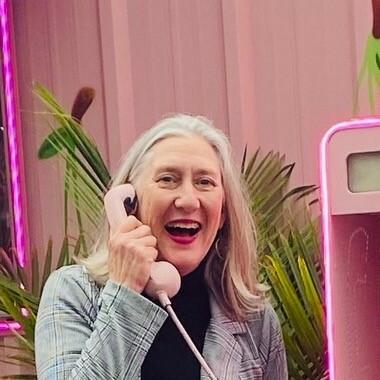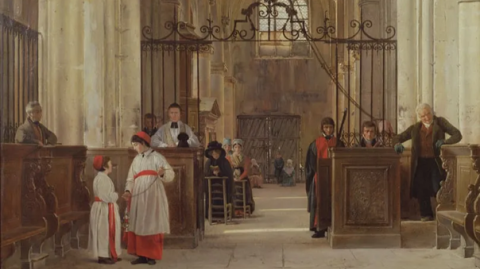TLDR: Old art can give new perspective just when we need it in life.
In the vesting room before service, I was visiting with Sandy Jones, our youth leader, as she was getting ready to serve as a Lay Eucharistic Minister last Sunday. We were discussing prayer cards. Sometimes I have used prayer cards in my art and I was explaining a little of what makes a prayer card. You make be asking, what are prayer cards? Prayer cards are also called holy cards. They are one of the most enduring, most endearing facets of devotional life. Like family photographs they are tangible reminders of people we love and who inspire us. As Sandy and I were talking about prayer cards, Sister Veronica Noel who was serving as a sub-deacon, just so happened to pull from her pocket a small blue covered book. It was a Holy Card Holder with about 20 or so plastic sleeves to protect and hold about 40 or so cards. Sister also mentioned she has not only 1 but 2 of these books! God’s timing is so amazing! There I was trying to explain the beauty of these little artworks as if right on que, Sister Veronica Noel produces an entire book for a visual aide.
You know how I love to give you just a little bit of history. So, here’s something you might not know about prayer cards. The first holy cards were sold during the Middle Ages to pilgrims as keepsakes of their visit. The oldest surviving holy card is a black-and-white woodcut image of St. Christopher dating from 1423. These cards were not really cards; they were pictures printed on inexpensive paper. Since they were easily lost, or torn, or destroyed, very few medieval holy cards have survived.
The golden age of holy cards came in the 19th century, particularly in Belgium, Austria, and Germany, where printers used a method called chromolithography to mass produce holy cards of exceptional beauty. Chromolithography was the first successful method for multi-color printing, but it was also a time-consuming process in which an image passed through the press many times, with a new color added each time the sheet of paper ran through the machine. The results were magnificent. These miniature works of art are still admired today.
Sadly, holy cards became a casualty of the war. After 1945 many holy card manufacturers in Europe went out of business. In recent years, there has been renewed enthusiasm for prayer cards. I buy some occasionally on eBay. I love the patina on the older ones. Not only do I find them beautiful to behold but also encouraging to read. Usually there is a prayer written on the flipside. In 2022, The Church of England launched the Explore Project, https://explorechristianity.info/ More than a million free prayer cards were delivered to cathedrals and churches of all denominations to help people find comfort and hope in this world of uncertainty. The Diocese of Texas has something sort of like a more contemporary prayer card. They actually have three sets. Two sets are informational cards all about our Episcopal faith. Specific cards on Episcopalians; The Creeds; Common Prayer; Sacraments and Scripture, Tradition and Reason. This set comes in English and Spanish. The next set is something you might investigate. This set is called Sharing Faith Cards. From the website,
Sharing Faith dinners invite people to gather around a meal and participate in life together. At each dinner, a moderator will prompt participants to share stories of their faith journey with printed questions. Sharing Faith provides a welcoming and safe way to engage one another, articulate our faith and build relationships.
Perhaps you may want to get some a set. Here’s the site information, https://www.epicenter.org/for-leaders/administration-resources/communication-resources/purchase-episcopal-information-cards/
Art historians sometimes describe art in terms of high and low. One may ask then, who decides what is high and what is low art? Indeed, the parameters of this contradiction are vague. Already in the 1700’s, writers began to make distinctions between high art and low art, the former concerning the aesthetics of a work, the latter more concerned with the works function and utility.
One such artist caught my attention a few years ago. He did a series of digital photo collages that recreate the naive sweetness of traditional prayer cards then put them into own everyday settings. In other words, he collages the higher art used in older prayer cards and places them using his digital skills into contemporary settings which could be called low art. I would like to introduce to you Trygve Skogrand. Trygve was born in Norway in 1967. He grew up in a vicarage (which says to me... his dad must have been the Vicar) in the beautiful Norwegian countryside. Living in the country created a love of nature and spiritual longing that is still fundamental in his work. I first read about him in a web magazine, Edge of Faith. I wanted to share the link, but it is no longer running. They did an interview with him in 2020. His earlier work from 2008 is what I want to introduce to you. He took the old and placed into a more contemporary setting.
Trygve is a Christian artist and makes art as a way to work with what for him is a great mystery: life as a human being, a creature on the strange shimmering edge between the heavenly and the earthly. Trygve commented, “For me, this mystery may be expressed in the shifting conversation between nature, the corporeal, and the spiritual.” Then in a blog in wrote, “I have always been working with reinterpretation of art and historic photographs in my art.” He works mainly in mixed media and collage. Trygve finds the process of cutting out, replacing and reassembling visual symbols conductive in searching for new clues and meanings in the exploration of this mystery.
The resulting artistic works from this process may turn out as religious, childlike, poetic, or anything in-between. Elements of myth are always present in his work. Trygve works have been exhibited worldwide. He lives and works in a small forest house in Trondelag, Norway.
I appreciate the fresh perspective his art offers. Sometimes we all need a fresh perspective to help us adjust when change happens in life. Maybe get some prayer cards to help you. Here’s another thought, What happens when we take our old fears, stress, resentments and place into a more contemporary setting such as God’s hands? That’s taking our lows to a higher place.
Rev. Leesa+





